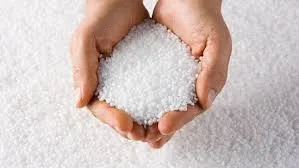Water Disinfection Chemicals Ensuring Safe Drinking Water
Water is essential for life, and ensuring its safety is a paramount public health concern. Water disinfection chemicals play a critical role in eliminating pathogens and harmful microorganisms, thereby safeguarding human health. From municipal treatment plants to private wells, the appropriate use of disinfection chemicals is crucial in providing clean drinking water.
One of the most widely used water disinfection chemicals is chlorine
. Chlorine is effective in killing bacteria, viruses, and protozoa, making it a staple in water treatment processes. The process involves adding chlorine to water, forming hypochlorous acid, which penetrates microbial cell walls, disrupting their metabolism and ultimately leading to the death of the organism. Chlorination is not only effective but also relatively inexpensive, making it the go-to choice for many water treatment facilities worldwide.However, despite its effectiveness, the use of chlorine has its downsides. The formation of disinfection byproducts (DBPs) during the chlorination process has raised concerns regarding potential health risks. Compounds such as trihalomethanes (THMs) and haloacetic acids (HAAs) can form when chlorine reacts with organic matter present in the water. Research has shown that prolonged exposure to certain DBPs may be linked to an increased risk of cancer and other health issues. As a result, water treatment plants are continuously seeking ways to minimize the formation of DBPs while maintaining efficient pathogen removal.
water disinfection chemicals

Alternative disinfection methods are also being explored and implemented. Chloramine, a combination of chlorine and ammonia, has gained popularity as it produces fewer DBPs compared to chlorine alone. Additionally, ultraviolet (UV) light disinfection has emerged as an effective non-chemical method to kill bacteria and viruses. UV disinfection processes involve exposing water to specific wavelengths of light, which penetrate and disrupt the DNA of microorganisms, rendering them incapable of reproduction. This method is particularly advantageous as it leaves no residual chemicals in the water.
Another promising alternative is the use of ozone, a powerful oxidant that can effectively eliminate a broad range of pathogens. Ozone disinfection involves generating ozone gas and injecting it into water, where it breaks down harmful substances and microorganisms. Though ozone is highly effective, its short half-life necessitates that water must be consumed or treated quickly after disinfection, which can complicate transportation and storage.
Overall, the choice of water disinfection chemicals depends on various factors, including the specific contaminants present, regulatory requirements, and cost considerations. Each method has its advantages and disadvantages, and ongoing research continues to refine and improve water disinfection technologies.
In conclusion, water disinfection chemicals are vital for ensuring safe drinking water. As public awareness regarding water quality increases, it is crucial for water treatment facilities to balance efficacy, safety, and environmental impact. By exploring innovative disinfection methods and optimizing existing ones, we can continue to provide safe drinking water for communities around the world, ultimately contributing to improved public health outcomes.

